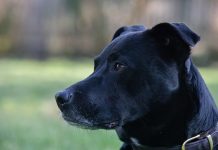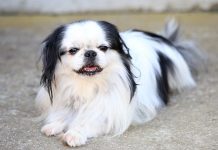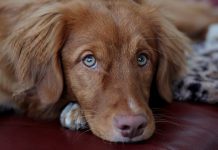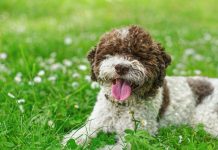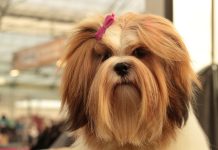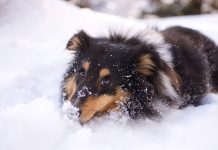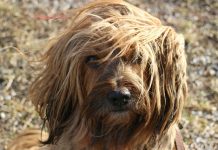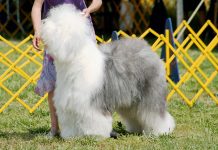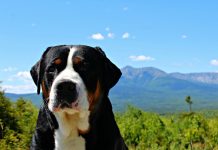History and Origins of the Anatolian Shepherd Breed

The Anatolian Shepherd is an ancient breed of dog that originated in the Anatolian region of Turkey. This breed has a rich history dating back thousands of years, where they were developed by nomadic shepherds to protect livestock from predators in the harsh and rugged landscapes of Asia Minor.
- Ancient Heritage: The Anatolian Shepherd is believed to be one of the oldest dog breeds in existence, with roots tracing back to ancient Mesopotamia.
- Purpose-Bred: They were selectively bred by Turkish shepherds for their guarding instincts and ability to protect livestock, especially sheep and goats, from wolves, bears, and other predators.
- Nomadic Lifestyle: Nomadic tribes in Anatolia relied heavily on these dogs to safeguard their herds as they moved seasonally in search of grazing lands.
- Regional Variations: Over time, regional variations of the Anatolian Shepherd emerged based on specific geographic and environmental factors within Anatolia.
- Recognition: The breed gained recognition outside of Turkey in the mid-20th century and was subsequently imported to other countries, including the United States, where it became known for its prowess as a livestock guardian.
Physical Characteristics and Appearance of Anatolian Shepherds
Anatolian Shepherds are large, powerful dogs with a distinctive appearance that reflects their working heritage and environment.
- Size and Build:
- Height: Adult males typically stand between 28 to 30 inches (71 to 76 cm) at the shoulder, while females are slightly smaller, ranging from 26 to 28 inches (66 to 71 cm).
- Weight: Males weigh between 110 to 150 pounds (50 to 68 kg), and females weigh between 80 to 120 pounds (36 to 54 kg).
- Muscular Build:
- Anatolian Shepherds have a robust and muscular build, with a deep chest and strong limbs, reflecting their strength and agility.
- Coat and Color:
- Coat Type: The breed has a short to medium-length double coat that is dense and weather-resistant.
- Color: Anatolian Shepherds come in various colors, including fawn with a black mask, white, brindle, and pinto. The coat colors often serve as natural camouflage in their native environment.
- Head and Features:
- Head: The head is large and impressive, with a slightly rounded skull and a pronounced stop.
- Ears: The ears are V-shaped, pendant, and set high on the head, often dropping forward.
- Eyes: They have medium-sized, almond-shaped eyes that are typically brown or amber in color.
- Tail:
- The tail is set high, thick at the base, and tapers to the end. It is carried low when relaxed and may be raised in a slight curve when alert.
- Gait:
- Anatolian Shepherds have a fluid and efficient gait, capable of covering long distances with ease. They are known for their endurance and stamina.
- Overall Impression:
- The breed exudes an air of strength, independence, and self-assuredness, coupled with a calm and composed demeanor.
Anatolian Shepherds are a remarkable breed known for their unwavering loyalty, intelligence, and protective instincts. Their impressive physical stature and keen senses make them excellent guardians of livestock and devoted companions for those who appreciate their unique heritage and qualities.
Anatolian Shepherd Temperament and Personality Traits
The Anatolian Shepherd is known for its distinct temperament and personality traits, shaped by centuries of breeding for the specific role of livestock guardian in the rugged Anatolian region of Turkey. Understanding these traits is essential for effectively caring for and training this unique breed.
- Protective Instinct:
- Anatolian Shepherds have a strong protective instinct ingrained in their nature. They are naturally wary of strangers and excel at guarding livestock and property.
- Loyal and Devoted:
- This breed is fiercely loyal to its family and will form a deep bond with its owners. They are devoted and will protect their loved ones with unwavering dedication.
- Independent Thinkers:
- Anatolian Shepherds are independent dogs known for their intelligence and problem-solving abilities. However, this independence can sometimes translate into stubbornness during training.
- Calm and Reserved:
- They typically have a calm and composed demeanor, especially when not provoked. They are not overly excitable and tend to assess situations carefully before taking action.
- Courageous and Fearless:
- Anatolian Shepherds are incredibly brave and fearless in the face of danger, which makes them excellent guardians against predators.
- Gentle with Family:
- Despite their formidable appearance and protective nature, Anatolian Shepherds are gentle and affectionate with their families. They are known to be good with children, although early socialization is crucial.
- Alert and Watchful:
- These dogs are highly alert and vigilant. They are always aware of their surroundings and will quickly respond to any perceived threats.
Training and Socialization Needs for Anatolian Shepherds
Training and socialization are crucial aspects of raising an Anatolian Shepherd to be a well-adjusted and well-behaved companion. Due to their independent nature and strong protective instincts, consistent and patient training methods are essential.
- Early Socialization:
- Start socializing your Anatolian Shepherd puppy early with various people, animals, and environments. This helps prevent excessive wariness or aggression towards strangers.
- Positive Reinforcement:
- Use positive reinforcement techniques such as praise, treats, and rewards to motivate and encourage good behavior. Harsh or forceful methods can lead to resistance and defiance.
- Obedience Training:
- Basic obedience training is essential to establish boundaries and ensure that your Anatolian Shepherd understands commands. Be firm and consistent in your training approach.
- Guardian Instinct Management:
- Teach your Anatolian Shepherd to distinguish between real threats and normal situations. Controlled exposure to new people and experiences can help them develop appropriate responses.
- Exercise and Mental Stimulation:
- Provide plenty of physical exercise and mental stimulation to prevent boredom and channel their energy positively. Long walks, play sessions, and puzzle toys are beneficial.
- Consistent Leadership:
- Establish yourself as a calm and confident leader without being harsh or dominating. Respectful leadership helps build trust and cooperation with your Anatolian Shepherd.
- Secure Fencing and Containment:
- Due to their strong guarding instincts and tendency to roam, ensure that your Anatolian Shepherd has a securely fenced area to prevent them from wandering.
By understanding the unique temperament of Anatolian Shepherds and providing appropriate training and socialization from an early age, you can nurture a well-mannered, confident, and loyal companion. Patience, consistency, and respect for their innate traits are key to successful training and bonding with this remarkable breed.
Health Considerations and Common Issues in Anatolian Shepherds
Anatolian Shepherds are generally a healthy and robust breed, but like all dogs, they can be prone to certain health issues. Responsible breeding practices and regular veterinary care are important for maintaining the health and well-being of Anatolian Shepherds. Common health considerations include:
- Hip Dysplasia:
- Hip dysplasia is a hereditary condition where the hip joint does not develop properly, leading to arthritis and mobility issues. Regular screening and breeding practices aimed at reducing the incidence of hip dysplasia are essential.
- Elbow Dysplasia:
- Elbow dysplasia is similar to hip dysplasia but affects the elbow joint. It can cause lameness and discomfort, especially in active dogs like Anatolian Shepherds.
- Bloat (Gastric Dilatation Volvulus):
- Anatolian Shepherds, like other deep-chested breeds, are at risk of bloat, a life-threatening condition where the stomach twists and fills with gas. Feeding smaller, frequent meals and avoiding vigorous exercise after meals can help reduce the risk.
- Entropion and Ectropion:
- Some Anatolian Shepherds may be prone to eyelid abnormalities such as entropion (inward rolling of the eyelids) or ectropion (outward sagging of the eyelids), which can cause eye irritation and require surgical correction.
- Patellar Luxation:
- Patellar luxation is a condition where the kneecap dislocates from its normal position, causing lameness and discomfort. Regular veterinary check-ups can help detect and manage this condition.
- Hypothyroidism:
- Anatolian Shepherds may be susceptible to hypothyroidism, a hormonal disorder that can affect metabolism and overall health. Symptoms include weight gain, lethargy, and skin issues.
- Cancer:
- Certain types of cancer, including osteosarcoma and hemangiosarcoma, are more prevalent in Anatolian Shepherds than in some other breeds. Regular veterinary examinations can help with early detection and treatment.
Living with an Anatolian Shepherd: Suitable Environments and Lifestyle Considerations
Anatolian Shepherds are best suited to environments and lifestyles that accommodate their natural instincts and characteristics. Consider the following factors when living with an Anatolian Shepherd:
- Space and Exercise:
- Anatolian Shepherds are large and active dogs that require ample space to move around. They benefit from regular exercise, including long walks, runs, and interactive play sessions. A securely fenced yard is ideal for them to roam and patrol.
- Training and Socialization:
- Early and consistent training is essential to channel their protective instincts appropriately. Socialize them with different people, animals, and environments from a young age to promote good behavior and reduce wariness towards strangers.
- Guarding and Livestock:
- If you intend to use an Anatolian Shepherd as a livestock guardian, provide them with the necessary training and exposure to livestock. They excel in this role but require proper guidance.
- Family Interaction:
- Anatolian Shepherds are devoted to their families but may be reserved around strangers. Supervise interactions with children and teach them how to respect and interact safely with the dog.
- Grooming:
- The breed’s short to medium-length coat requires regular brushing to minimize shedding and maintain cleanliness. Check and clean their ears regularly to prevent infections.
- Health Monitoring:
- Schedule regular veterinary check-ups to monitor their health and address any issues promptly. Stay informed about breed-specific health concerns and discuss preventive measures with your veterinarian.
Anatolian Shepherds are intelligent, loyal, and protective dogs that thrive in environments where they are valued for their natural abilities and given the proper care and training. With responsible ownership and attention to their specific needs, Anatolian Shepherds make excellent companions and guardians for the right households.
Anatolian Shepherd Variations and Breeding Practices

Anatolian Shepherds, like many other breeds, can exhibit variations in physical traits and temperament due to different breeding practices and regional influences. Understanding these variations and the importance of responsible breeding practices is key to ensuring the health and quality of the breed.
Variations in Anatolian Shepherds:
- Size and Build:
- Anatolian Shepherds can vary in size, with some individuals being larger or smaller than the standard. Breeders may focus on specific size preferences based on their intended use (e.g., livestock guardian vs. family companion).
- Coat Color and Type:
- The breed standard recognizes various coat colors, including fawn with a black mask, white, brindle, and pinto. Coat length and texture can also vary slightly among individuals.
- Temperament:
- Anatolian Shepherds are known for their protective and loyal nature, but individual temperament traits can differ. Some may be more reserved and cautious, while others may be outgoing and confident.
- Working vs. Show Lines:
- Breeders may focus on breeding Anatolian Shepherds for specific purposes, such as livestock guarding, working on farms, or competing in conformation shows. Working lines may prioritize traits like independence and protective instincts, while show lines may emphasize appearance and structure.
Responsible Breeding Practices:
- Health Testing:
- Responsible breeders prioritize the health of Anatolian Shepherds by conducting health screenings for common genetic conditions, such as hip dysplasia, elbow dysplasia, and eye disorders. Screening helps reduce the risk of passing on hereditary health issues to offspring.
- Selection for Temperament:
- Good breeders select breeding pairs based not only on physical traits but also on temperament and behavior. They aim to produce puppies with stable, predictable temperaments suitable for their intended roles as guardians or companions.
- Preservation of Working Abilities:
- Breeders committed to preserving the working abilities of Anatolian Shepherds prioritize traits like intelligence, independence, and protective instincts. They breed dogs that excel in their traditional role as livestock guardians.
- Ethical Practices:
- Responsible breeders adhere to ethical guidelines set by kennel clubs and breed associations. They prioritize the well-being of their dogs and puppies, providing proper care, socialization, and appropriate living conditions.
- Education and Support:
- Good breeders educate potential owners about the breed’s characteristics, care requirements, and potential challenges. They provide ongoing support and guidance to puppy buyers throughout the dog’s life.
- Avoiding Overbreeding and Inbreeding:
- Overbreeding and inbreeding can lead to health issues and a limited gene pool. Responsible breeders carefully plan each litter, considering genetic diversity and avoiding closely related matings.
- Breed Club Participation:
- Reputable breeders actively participate in Anatolian Shepherd breed clubs and networks. They collaborate with other breed enthusiasts to promote breed standards, health initiatives, and responsible breeding practices.
By supporting responsible breeders who prioritize the health, temperament, and working abilities of Anatolian Shepherds, you contribute to the preservation and betterment of this ancient and noble breed. When seeking an Anatolian Shepherd puppy, do thorough research and choose a breeder committed to ethical practices and the welfare of their dogs.
Best Names with Meanings for Anatolian Shepherds
Naming your Anatolian Shepherd is an important decision that reflects their strong and noble characteristics. Here are name suggestions with meanings that could be fitting for an Anatolian Shepherd:
Male Names:
- Khan – Meaning “ruler” or “leader” in Mongolian.
- Leo – Derived from the Latin word for “lion,” symbolizing strength and courage.
- Titan – Referring to something of great strength or size, like the Titans of Greek mythology.
- Thor – Named after the Norse god of thunder, symbolizing power and protection.
- Ragnar – Inspired by Ragnar Lothbrok, a legendary Viking king known for his bravery.
- Koda – Meaning “friend” in Native American Sioux language.
- Ajax – From Greek mythology, representing a strong and heroic figure.
- Brutus – Signifying strength and resilience.
- Kai – Meaning “strong” or “warrior” in various cultures.
- Cyrus – Named after Cyrus the Great, a powerful Persian emperor.
- Ares – Named after the Greek god of war, embodying strength and valor.
- Maximus – Meaning “greatest” in Latin, suitable for a majestic dog.
Female Names:
- Athena – Named after the Greek goddess of wisdom and warfare.
- Zara – Meaning “princess” or “flower” in Arabic.
- Sasha – Russian diminutive of Alexandra, meaning “defender of mankind.”
- Luna – Latin for “moon,” symbolizing brightness and beauty.
- Freya – Named after the Norse goddess of love and beauty.
- Nova – Latin for “new,” representing a shining star.
- Cleo – Short for Cleopatra, symbolizing royalty and elegance.
- Aria – Meaning “lioness” in Hebrew, suitable for a strong female.
- Kira – Japanese name meaning “sunlight” or “glitter.”
- Nala – Swahili for “gift,” perfect for a beloved companion.
- Ayla – Turkish name meaning “moonlight.”
- Sable – Referring to the dark fur color, also associated with strength.
Gender-neutral names:
- Milo – Derived from the Old Slavic word for “merciful” or “dear.”
- Echo – Inspired by the echo of sound in nature, representing alertness.
- Oscar – Meaning “divine spear” in Irish, symbolizing strength and protection.
- Misha – Russian diminutive of Michael or Mikhail, meaning “who is like God?”
- Dakota – Native American Sioux name meaning “friend” or “ally.”
- Sage – Symbolizing wisdom and strength, like the herb.
- Kai – Meaning “ocean” or “forgiveness” in Hawaiian, suitable for a calm and composed dog.
- Blaze – Signifying fire and intensity, perfect for a spirited Anatolian Shepherd.
- Ari – Hebrew for “lion,” representing courage and power.
- Kona – Hawaiian name meaning “lady,” reflecting grace and elegance.
Nature-Inspired Names:
- Aspen – Named after the graceful and resilient aspen tree.
- Rocky – Referring to rugged terrain, symbolizing strength.
- Sierra – Spanish for “mountain range,” representing endurance.
- Ridge – Signifying the top of a mountain or hill, reflecting strength.
- Canyon – Symbolizing depth and grandeur, like a majestic canyon.
- Storm – Reflecting strength and power, like a powerful storm.
- Falcon – Inspired by the swift and powerful bird of prey.
- Ember – Referring to a glowing piece of burning wood, symbolizing warmth and intensity.
- Atlas – Named after the Titan god who held up the celestial spheres in Greek mythology.
- Willow – Inspired by the graceful and resilient willow tree.
Choose a name that resonates with your Anatolian Shepherd’s personality, appearance, and the qualities you admire in them. Whether you prefer a name inspired by mythology, nature, or strength, the perfect name will reflect your dog’s unique characteristics and make a lasting impression.
In conclusion, this comprehensive guide to Anatolian Shepherd dogs has provided a detailed overview of this remarkable and unique breed. Throughout our exploration, we’ve delved into the history, distinctive characteristics, and essential care considerations that define Anatolian Shepherd dogs. Known for their protective nature, loyalty, and intelligence, Anatolian Shepherds make excellent guardians and companions for experienced dog owners seeking a devoted and vigilant pet. They require proper training, socialization, and regular exercise to thrive as well-rounded companions. As you embark on your journey with an Anatolian Shepherd, may you appreciate their unique qualities and form a strong bond with this impressive breed, creating lasting companionship and fulfillment together.







